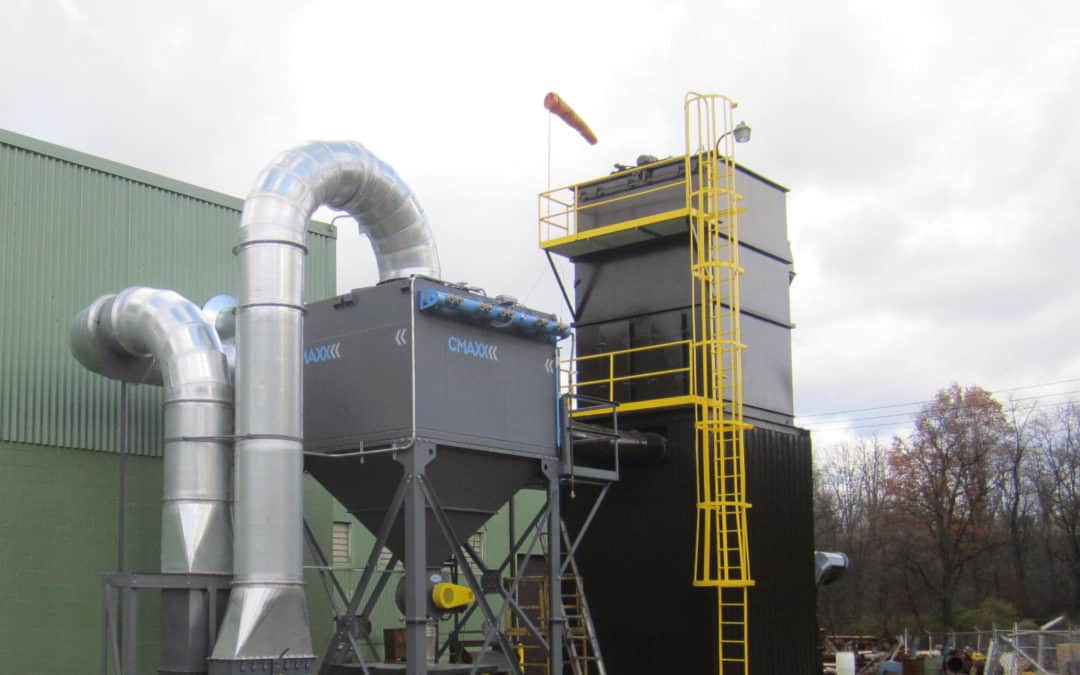
by Imperial Systems | Jan 15, 2019 | Uncategorized
Installing dust extraction systems in the industrial workplace helps keep employees and equipment safe. After all, industrial processes usually generate hazardous dust and fumes. So make sure you invest in a high-quality dust extraction system that will do its job and maintain safety.
It may be tempting to look at cost before quality as you consider various dust extraction system manufacturers. However, industrial dust extraction is an area in which you do not want to compromise on safety. Therefore, here are some tips to ensure the safety of your dust extraction equipment.

8 Tips for Safe Industrial Dust Extraction Systems
1. Pressure Rating
First, find an industrial dust extractor with high-pressure ratings. If you invest in a durable system that is already equipped with proper protection, additional protection costs will be decreased.
2. Ductwork
Second, buy quality ductwork. You may have the best system in the world, but your ductwork may be low grade and lack essential parts like dampers and valves. As a result, the threat of serious, explosive malfunctions is still high.
3. Hopper Storage
Next, keep the storage area beneath the hopper clean. The pulse-cleaning system could be hindered if it is not consistently emptied.
4. PLC
Avoid using a programmable logic controller (PLC) to run your pulse-cleaning system. In short, PLCs are too slow for fast-paced pulse cleaning.
5. Filter Change
Select a system with which filter exchanges can be done safely and with ease. Consequently, if the filters are positioned high or in an inconvenient place, changing them out can be very taxing and even dangerous.
6. Filter Life
Filters are a very important part of industrial dust extraction equipment. In particular, one of the most significant aspects of filters is their life span. Certainly, longer filter life both lowers costs and employee dust exposure.
7. Fire Prevention
Vertically mounted filters do not allow dust to accumulate on top of them. Favorably, this eliminates a fire hazard. Further, there are a number of features that industrial dust extraction systems have that can prevent fires. Examples include flame-retardant filter media and spark arrestors.
8. Accessories
A number of safety accessories can be added to your system. For example, railed platforms and ladders, lock-out doors, BIBO (bag-in, bag-out) containment systems, and safety monitoring filters all decrease the risk of hazards.
Compare Dust Extraction Companies
In summary, keep safety in mind when you evaluate the products of dust extraction system manufacturers. What practical features and innovations do they offer, especially for your particular safety issues? Imperial Systems offers high-quality industrial dust extraction systems that meet all OSHA and EPA safety standards. You can be sure that you have a safe and secure system from Imperial. Learn more about the CMAXX dust and fume collection system here.
Read more
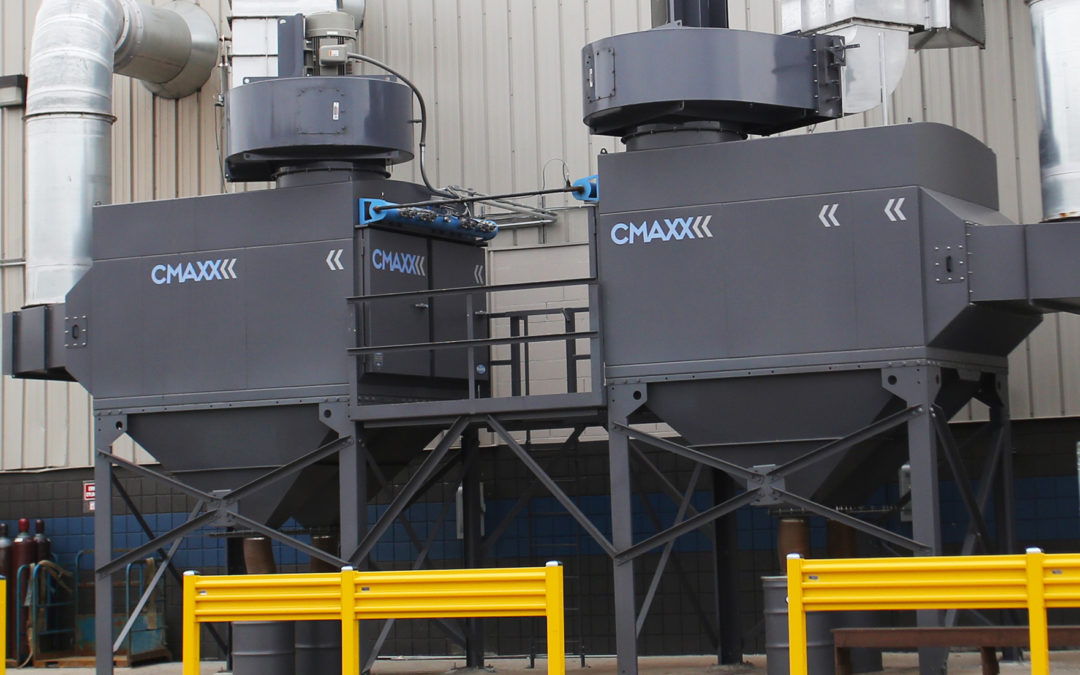
by Erin Long | Jan 7, 2019 | Uncategorized

Imagine that you’re doing an online search for “dust collector”. You’re going to get a lot of results. Some will be for large commercial dust collectors. However, some will be for small units made to fit in a home garage. How do you get through the maze of search results to find the dust collector that you’re looking for? First of all, what do you need your dust collector to do? Commercial dust collection systems, like the ones we make, are a major investment. Let’s look at some examples of who needs a commercial dust collector and who needs a smaller and less expensive solution.
Consider These Scenarios
“My home business produces a lot of sawdust and it’s a mess.”
Jim has a one-man woodworking business and operates it out of his garage. He cuts, saws, and sands wood. As a result, his work produces a lot of sawdust, which he knows is a fire hazard as well as a mess. However, Jim does not need a commercial dust collector. So, if he does a search for home dust collection system, he’ll find lots of options that will do the job for him.
“The three of us weld and grind metal a lot during the work day.”
Anne owns a small metalworking business. She does a lot of welding. In addition, she has two employees who weld and grind metal for part of the day. To stay safe, Anne and her employees definitely need dust and fume collection. There are many search results for small business dust collector that will offer Anne some good options. In this case, a commercial dust collector is too big and too expensive for her needs.
“We’re getting a lot of fumes in the shop and I’m worried about everybody’s health.”
Adam is the owner of a metalworking shop. He has ten employees, but plans to add more. They usually spend the entire work day welding and grinding. The shop also has a laser cutting table. As a result, air in the shop is often cloudy with fumes. Opening the doors helps a little in the summer, but it’s a huge waste of heat in the winter. Even in the summer, the cutting table creates a cloud of fumes. Therefore, Adam’s business might want to invest in a commercial dust collector system. This system would be a good investment because it would be able to handle the dust from the welding and grinding. It would also be big enough to deal with the cutting table. If Adam searches for commercial dust collection systems, he will get results that are more in line with his needs.
“We’ve got dust going everywhere and it’s a huge problem for our business.”
ABC Company is a food processing company that packages powdered food products. Most noteworthy, many of these are combustible. The company has some small dust collectors located over some of the conveyors. However, they have dust built up around the facility and when loads are dumped into bins, dust goes everywhere. This company absolutely needs to look at a commercial dust collector. They have a serious dust problem that’s coming from many different applications in their building. Consequently, a high danger of having a large fire or explosion exists. They are also in danger of serious OSHA fines for the fire hazard. Above all, their dust collection system needs to have solid flame and explosion protection equipment for their combustible material.
“We got fined because our current system isn’t efficient enough for new standards.”
Batteries R Us is a large company that manufactures batteries for vehicles. They have a commercial dust collector in place already. However, they recently got fined for an EPA violation because their system was not capturing enough of the lead dust from their process. Also, their dust collector is old and was installed before some of the newer EPA and OSHA regulations were put in place. To get back into compliance, this company needs to invest in a new, updated commercial dust collector. Plus, the new system will need to have HEPA filters to catch the maximum amount of lead dust.
Get Expert Advice for a Commercial Dust Collector
For any business, a commercial dust collector system is a serious investment. However, if that’s what it takes to keep people healthy and keep your facility safe, it’s worth it. You might only need a small home unit, or perhaps only one or two small portable units for your small shop. But if you’ve got big dust and fume problems and you need to make a major investment to help solve them, please allow us to help you plan the best system for your needs.

Read more
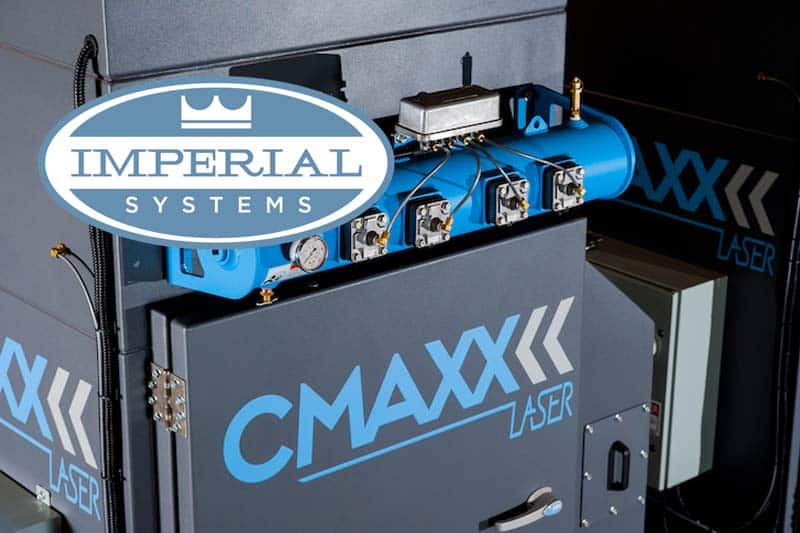
by Imperial Systems | Jan 3, 2019 | Uncategorized
Dust control solutions are the number one concern for any work environment where employees are exposed to dangerous fumes or dust from metal, chemicals, wood, grains, or any type of particulates that may pose a significant health hazard. Providing a safe place for your personnel to work every day, along with ensuring that you are protecting your community from harmful exposure to dangerous particulates, is a necessary component of your responsibilities to your company and your compliance with environmental regulations. Fortunately, modern industrial dust control systems are also a wise, long-term investment, which can save you time and money in your efforts to keep the air and water clean for your workplace and your surrounding community.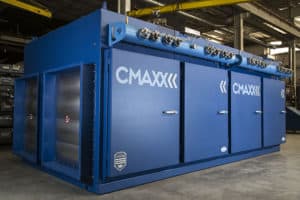
While providing state of the art dust control equipment to companies in a wide variety of industries over several years, we at Imperial Systems have made it our priority to save businesses time and money in their efforts to maintain a clean, safe, and healthy workplace. From our dust control systems to our NanoFiber filter technology, our equipment promises superior performance while consuming less energy and guaranteeing safety throughout the workplace.
Dust Control Solutions: The Basics
If you are unfamiliar with the basic components of dust control technology, the following is a brief description of the dust and fume control equipment we offer to help you provide a safe and clean environment for your company.
- Dust Collector Systems: With 10% more filter media than other vertical cartridge systems, our CMAXX Dust Collector System gives you a longer filter life. Its design facilitates the easier collection of dust in the hopper, with 20% more space around the filters than in other dust collectors. With pulse distribution (PD) technology, the CMAXX system extends the life of your filters up to 200%.
- CMAXX Laser and Plasma Fume Extraction Systems are factory pre-wired and ready to operate, and can be custom-fit to almost any location. With 10 gauge steel construction and a built-in spark trap specifically designed for laser and plasma table systems, these systems offer superior protection for any environment.
- DeltaMAXX Dust Collector Cartridge Filters boast a MERV 15 filtration efficiency, capturing 99.9% of particulates from .3 to .5 microns. With our NanoFiber technology, particulates fall off of the filters more easily, so the pulse distribution systems in your dust control products use significantly less energy.
- Heavy Duty Abort Gates: As a necessary component of most dust control solutions, abort gates can prevent disastrous events triggered by sparks or embers. Our fail-safe electromagnets and gate accelerating springs are among the many features that make Imperial Systems’ abort gates the best in the industry.
For more information about factory dust control solutions for your company, contact Imperial Systems today. We look forward to discussing how we can meet your unique needs to help keep your employees safe while making a substantial long-term investment for your business.
Read more
![Plasma Cutting & Hexavalent Chromium [Infographic]](https://www.isystemsweb.com/wp-content/uploads/2018/12/white-paper-header-01-1080x675.jpg)
by Erin Long | Dec 19, 2018 | Uncategorized
This infographic looks at the hidden dangers of plasma cutting and laser cutting. One of the biggest dangers associated with these is hexavalent chromium when cutting stainless steel. It can pose many health risks and proper precautions should be taken to avoid the risks associated with it.

Plasma cutting has become common in the industry today. It is ideal for applications requiring precision cuts. What many people do not understand are the dangers that can arise from a plasma table.
How Does It Work?
An electric arc is sent through a restricted opening, heating the gas to an extreme temperature. This energy breaks apart gas molecules and creates plasma. When loose electrons collide they release enough energy to cut through the metal. See more info on basic plasma cutting.
A surface layer of anti-corrosive chromium covers many metals. This chromium keeps stainless steel strong and makes it more resistant to corrosion. It is not dangerous to humans. However, hot work such as plasma cutting changes the nature of chromium. When that much heat is applied to chromium, it oxidizes and converts the chromium to a hexavalent state. Hexavalent chromium, or Cr VI, can be extremely dangerous.
Why Is Hexavalent Chromium Dangerous?
Cr VI enters the body through inhalation or direct skin contact. Because it is water-soluble, it can easily pass through cell membranes. Inside the cells, Cr VI attacks DNA, proteins, and membrane lipids, breaking them down. This disrupts cellular integrity and functions, shutting down the cell.
Once the hexavalent chromium begins to break down cells, it can cause various health problems. This includes respiratory issues, eye irritation, skin effects, and even cancer.
Is PPE Enough Protection from Hexavalent Chromium?
Elimination – The best line of defense when dealing with a workplace hazard is to eliminate the source. While this may work in some cases, hexavalent chromium can only be eliminated if plasma cutting is also done away with. Plasma tables are too crucial to most operations for this to take place.
Engineering Controls – The next best option for dealing with hexavalent chromium is to put engineering controls in place that will get rid of as much of the hazard as possible. These controls can include exhaust fans, fume hoods, and paint booths.
Administrative Controls – Administrative controls deal with any practices put in place to work safer. This may mean training all employees working with Cr VI how to work in a way that is better for their health.
Personal Protective Equipment – PPE is the least preferred method of protection. This puts health and safety into the hands of individual employees. So, any employee that does not like or forgets to wear equipment is put at risk.
Breathe Better, Work Safer
The Imperial Systems CMAXX Laser is the perfect engineering control for this type of application. It is designed specifically to take on tough laser, plasma, and thermal applications. This modular system connects directly to the cutting table, using minimal ductwork. Additionally, it comes completely wired from the factory, making it as easy as plugging it in and pushing Start.
Features:
- Factory pre-wired
- Tool-free filter access
- 3/16” and 10 gauge carbon steel construction
- DeltaMAXX filters
- Includes control panel
- Built-in spark trap
- Custom configuration to fit your location
- Fan silencer
- Optional integrated HEPA filter
- Easy clean-out dust drawers
Read more about this issue and about how the CMAXX Laser can help you in the white paper.
Read more
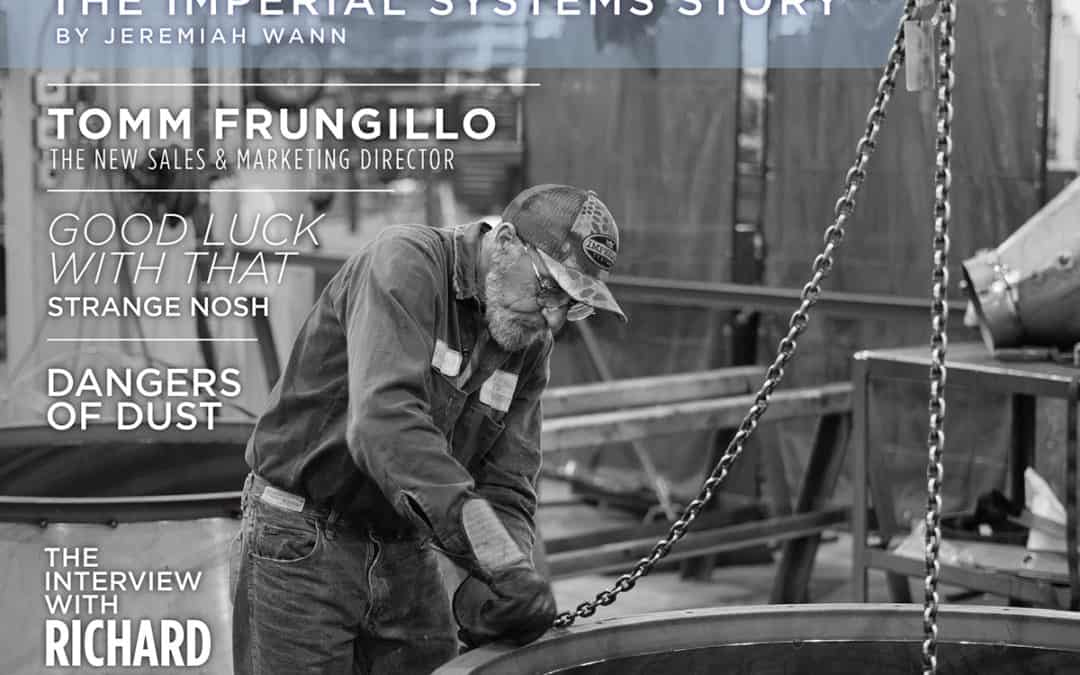
by Scott Stearns | Nov 26, 2018 | Uncategorized
Dusty Jobs Issue 7 is the third quarter of the year. Check out the articles! Charlie is back with an article about food, and we interview one of our welders, Richard Matters. If you would like a printed hard copy of this issue of the quarterly newsletter, contact your Imperial System Sales Rep.
Click the cover to download and print the newsletter.
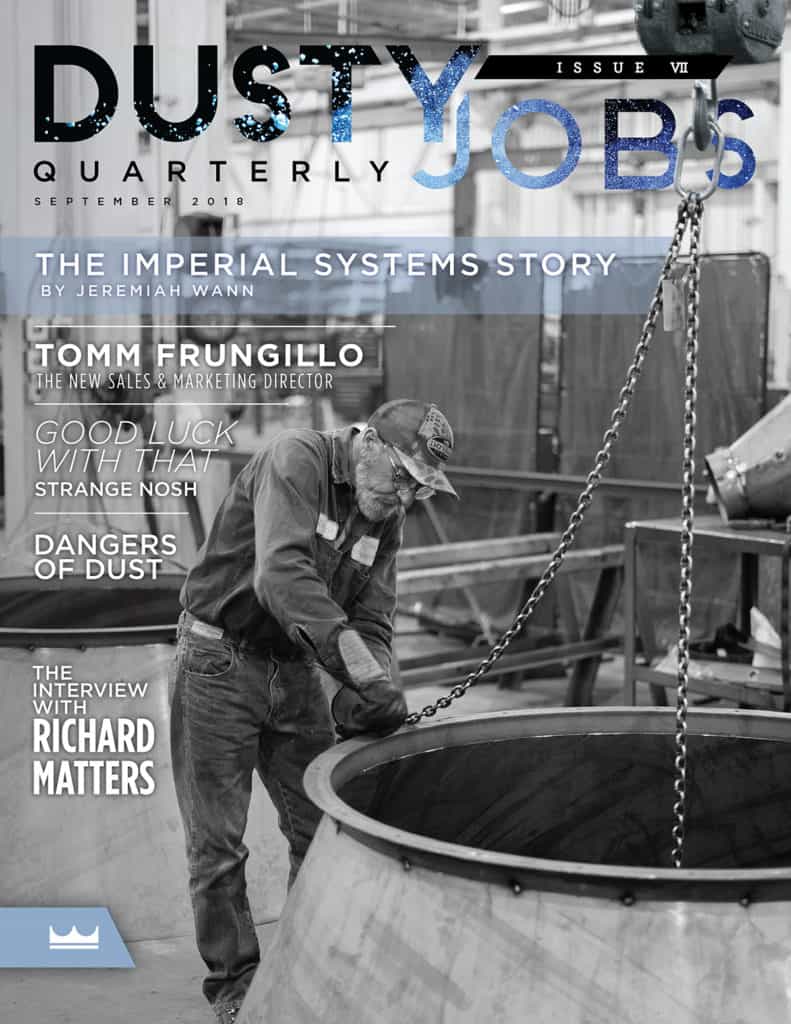
CLICK THE ARTICLE TO READ.





Read more
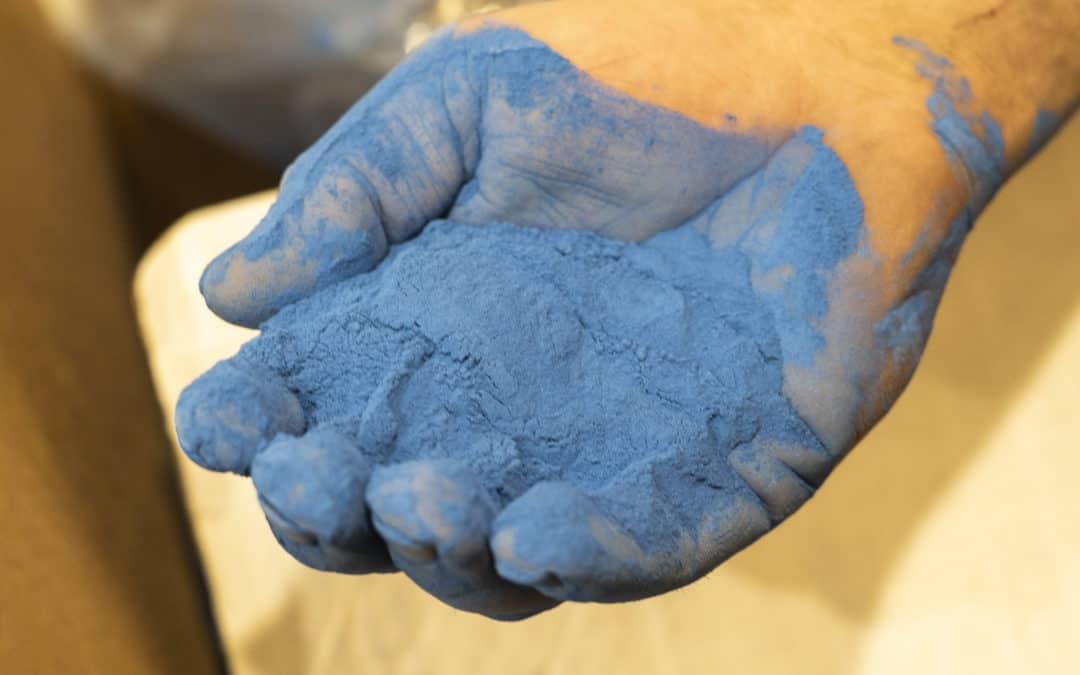
by Scott Stearns | Sep 13, 2018 | Uncategorized
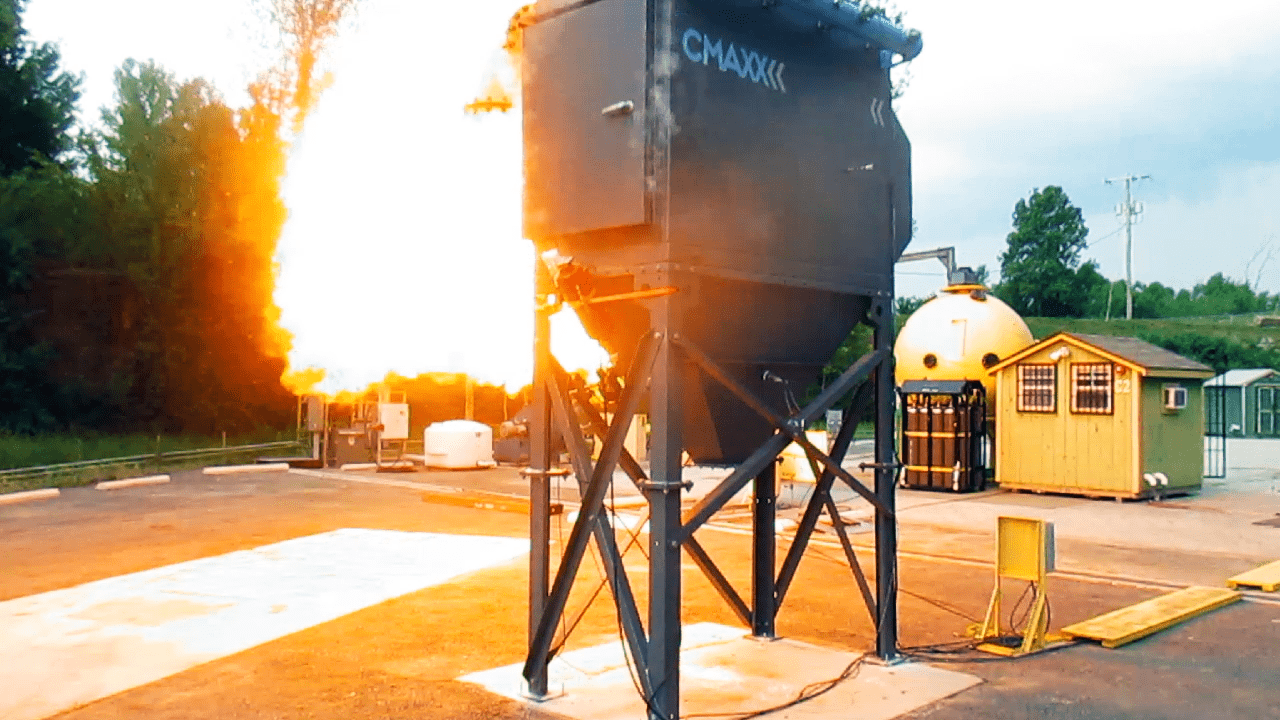
By now, if you deal with combustible dust in your facility, you have probably heard about NFPA 652, the new Standard on the Fundamentals of Combustible Dust. According to this new standard, your company must have completed a Dust Hazard Analysis by October 2018. OSHA inspectors making overall safety checks can ask for a company to present its DHA and may fine any company that hasn’t conducted one if the dust is a safety hazard.
How do you know if NFPA 652 applies to you and if you need to conduct a dust hazard analysis?
This standard applies to both new installations and existing facilities, so if your process produces dust of any type, it might apply to you. The first step is to conduct safety testing on your dust or particulate if you haven’t already. Because NFPA 652 is a combustible dust standard, the first step is to have a dust test performed. This will give you key information about whether your dust is combustible, how dangerous it is, and what steps you may have to take to address it.
A dust hazard analysis is a review process that looks at each part of the facility’s processes and evaluates any fire, deflagration, or explosion hazards that are present anywhere in the facility as the result of combustible dust. By this standard, it is not good enough to be able to show that you had your dust tested and that you have a dust collection system in place. The entire hazard analysis must be documented. This includes checking for the following hazards and documenting them completely:
- Is the dust in this process or area combustible?
- Is there dust accumulation in any part of the area?
- At any point in this process, is the dust airborne or in a cloud (where it is easier to ignite)?
- Are there any ignition sources that could ignite the dust?
- Is there enough dust present during the process to allow a deflagration?
Once all these factors have been assessed, the dust hazard analysis needs to answer some very important questions about what’s being done currently and what needs to change in managing the hazards.
- What hazard management is in place right now to deal with the combustible dust hazard in each area or process?
- Does the current hazard management address all the issues that the hazard analysis uncovered?
- If current hazard management isn’t enough or doesn’t cover everything, what steps need to be taken to improve it?
Keep in mind that this is necessary for each area or process in your facility, even if you have one centrally located dust collection system. For example, if your metalworking facility has plasma cutting, welding, and grinding or other fabrication processes, the DHA has to assess the hazards for each one. The weld fumes present a different type of risk than the dust from grinding, for example, and some processes produce a fine airborne fume instead of a heavy accumulating dust.
It’s possible that your DHA will find that you have your combustible dust and fume hazards under good control. If that’s the case, conducting the DHA will give you a full hazard report that meets NFPA 652 standards and that you can present to an OSHA inspector.
If your DHA identifies hazards that still need to be addressed, it’s still very important that you’ve done your work, documented all the combustible dust hazards, and are taking steps to fix problems. Contacting a dust and fume collection professional like Imperial Systems will help you identify your options. We can help you make sure that every area of your facility passes the dust hazard analysis.
NFPA 652 is the organization’s new attempt to prevent combustible dust damage, injury, and death in the workplace. A dust hazard analysis may take time and require good documentation, but it might help you catch a potentially dangerous problem. Take the time to conduct a dust hazard analysis, or have professionals come in and assist you. Address problems if you find them, and you’ll have a safer and healthier workplace.
Download our Dust Testing Sheet and call our team to have your dust tested for a KST value.
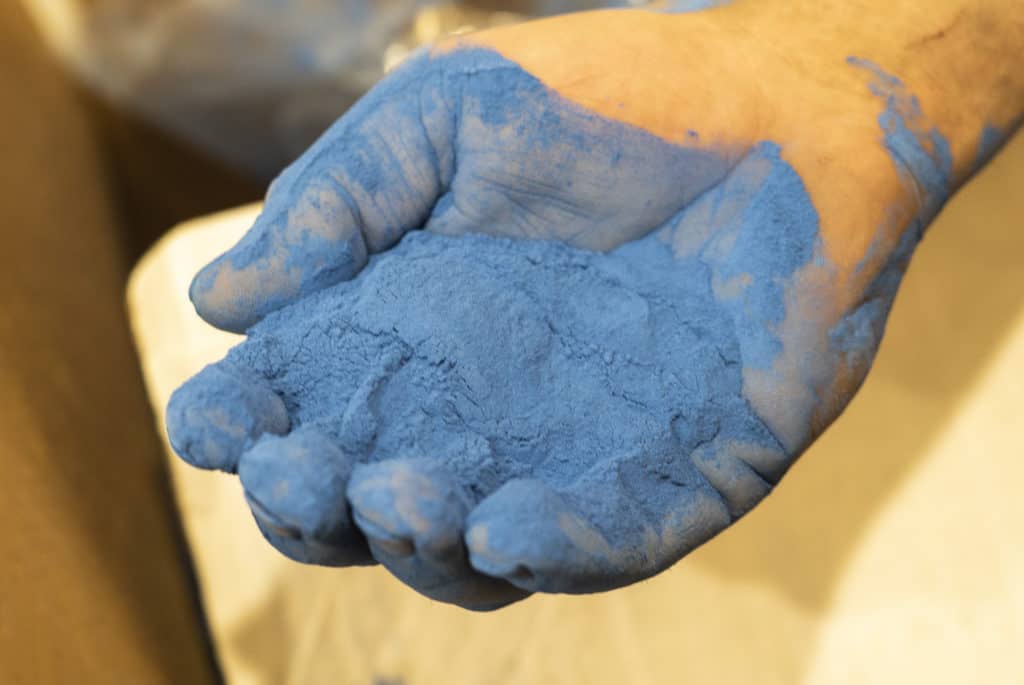
Read more







![Plasma Cutting & Hexavalent Chromium [Infographic]](https://www.isystemsweb.com/wp-content/uploads/2018/12/white-paper-header-01-1080x675.jpg)










